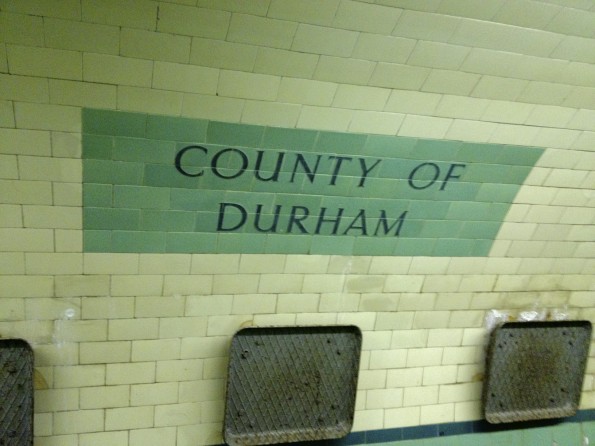The Tyne Pedestrian and Cycle Tunnels: eight years on
In May 2012, I blogged about visiting ‘the Ped’, more formally know as the Tyne Pedestrian and Cycle tunnels, which first opened in 1951. A year later, the tunnels closed to undergo a two-year, £7m refurbishment.
The refurbishment didn’t go according to plan: it ended up taking over six years and costing £16m. After adjustment for inflation, that’s about 60% of the cost of building the tunnels in the first place.
Today, I thought I’d revisit and see what had changed.
Both the north and south entrances to the tunnel retain their rotunda-like buildings, that have something of the feel of stations. Entrance remains free of charge. In 2012, the south end was looking perhaps a little tired.
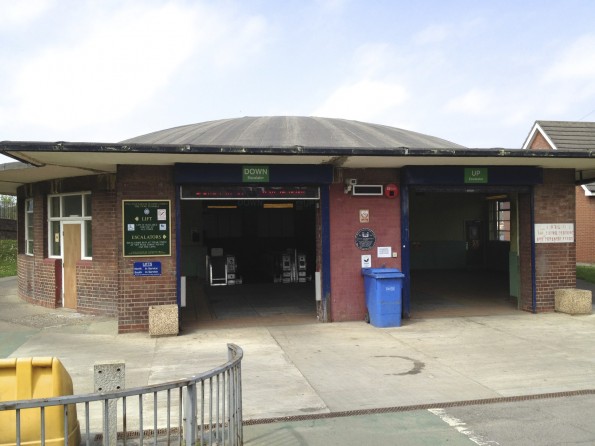
Today, the paving on the approach has been considerably improved, with much clearer cycle paths. The overall appearance has been smartened up, though the heritage plaque seems to have been lost and a TV screen of questionable function has been installed. The shutters are also of note, not only for being new, but also because the tunnels are no longer open 24 hours as was previously the case. They now only open 6am to 8pm, at least “until further notice”.
Note that the entrance is labelled ‘Jarrow’: this on the Jarrow side of the river. One might have thought it more logical to make it plain that the tunnel is for Howdon, but that would I suppose conflict with the station heuristic for which the designers seem to be reaching.
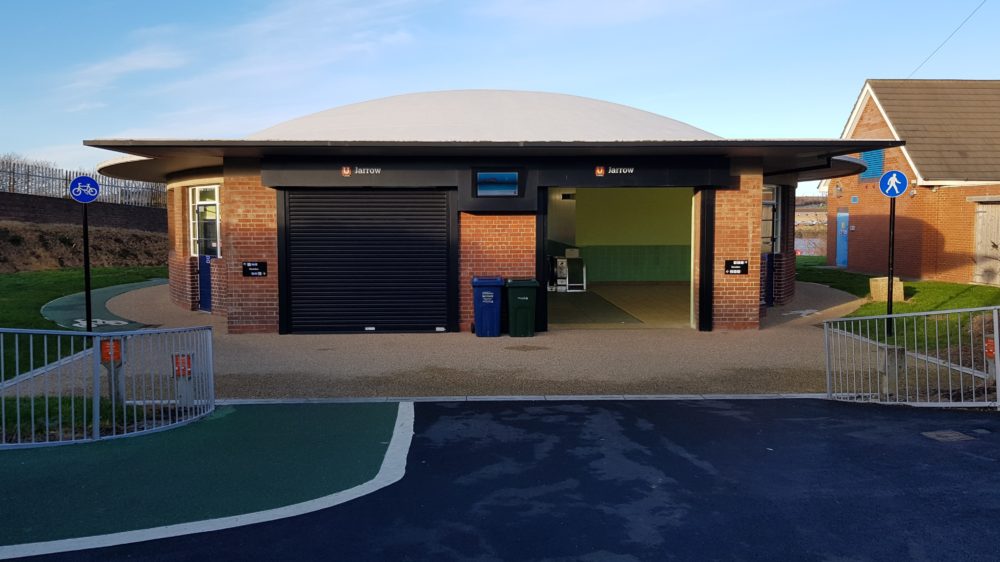
On entering the rotunda, one was formerly presented with two historic wooden escalators, each labelled with its intended direction of motion, and each labelled with one of the historic county crests of the two historic counties the tunnel connects. At the time of installation, they were the world’s longest escalators, and were only overtaken in the UK by those installed at London’s Angel tube station some forty years later. In 2012, they were the longest remaining wooden escalators in the world.
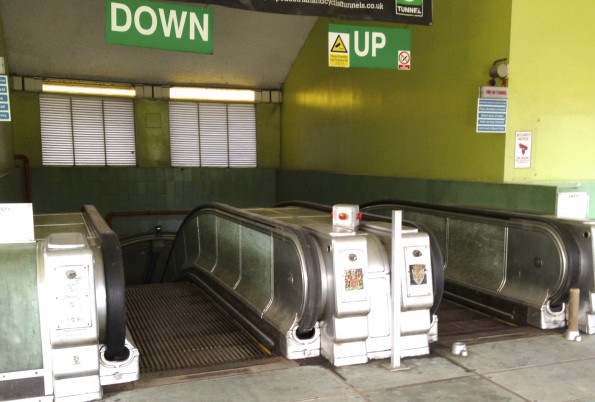
Today, only one of these remarkable escalators remains in place at each end of the tunnel, the other torn out to make way for an (as yet uninstalled) inclined glass elevator. At the southern end, the ‘County Durham’ escalator is the lucky one… I forgot to check the northern end.
The remaining escalators, which didn’t work in 2012, have now been fixed in position: note the open ‘gate’ with its post driven in a step at the top the escalator below. They are now, I suppose, unique heritage staircases rather than escalators.
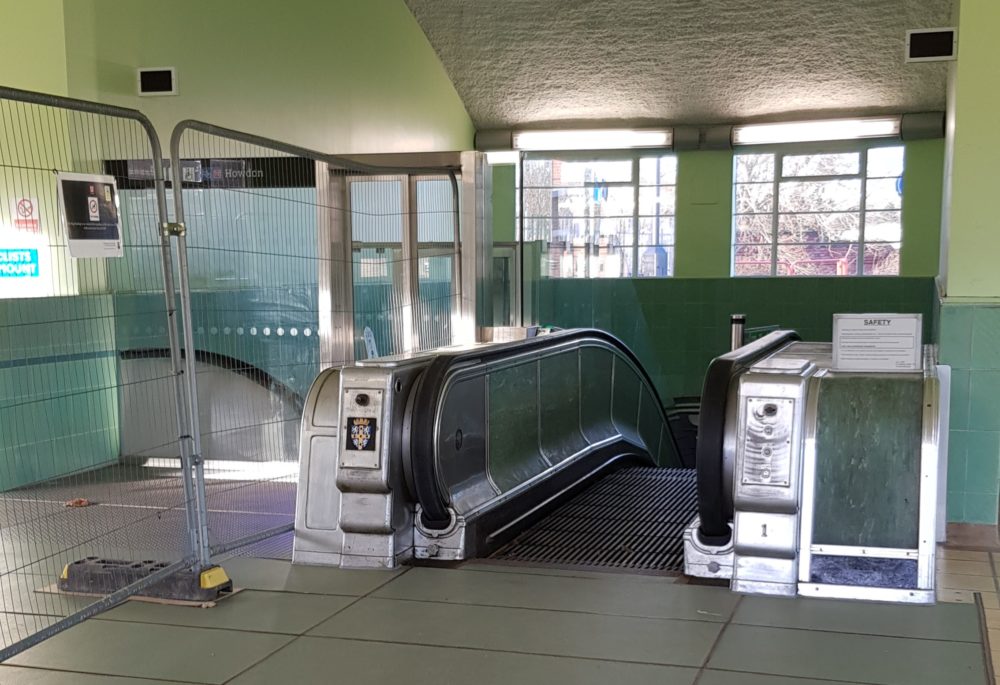
Note too that the safety information posted next to the unopened glass lift is unusual: the imperative is not to avoid lift use in the event of a fire, but to listen for instructions as the lifts may be used for evacuation. The ‘mood lighting’ is eye-catching, but not especially to my taste.
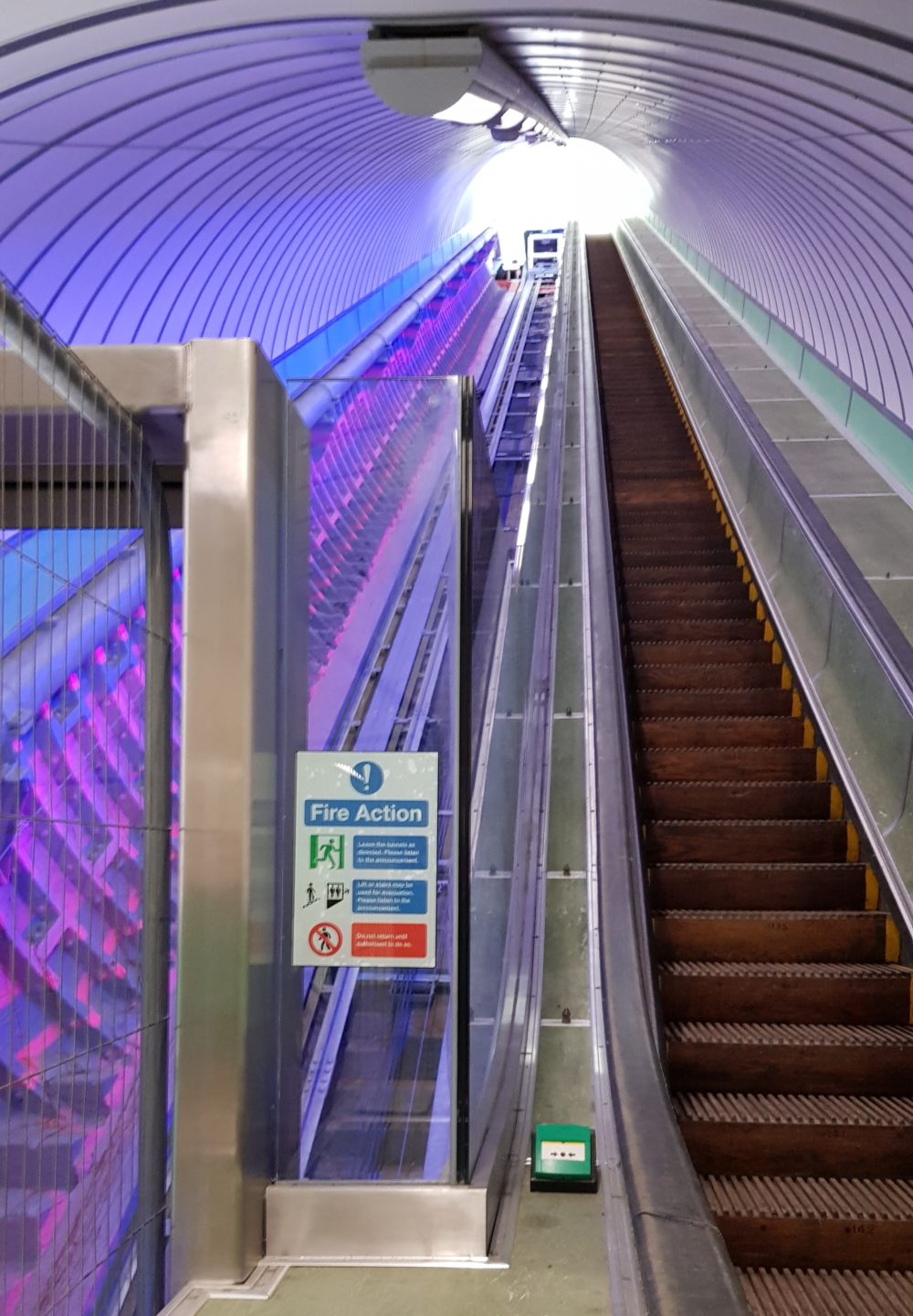
As I walked down the escalator in 2012, the strong scent of damp rose to greet me. Not so in 2020. The atmosphere barely seemed to shift. The considerably brighter (and working) lighting made the experience feel considerably less unnerving.
At the bottom, one reaches a sort of ‘lobby’ at the entrance to the slightly wider cyclist tunnel and the slightly narrower pedestrian tunnel. In 2012, this was a grimy space.
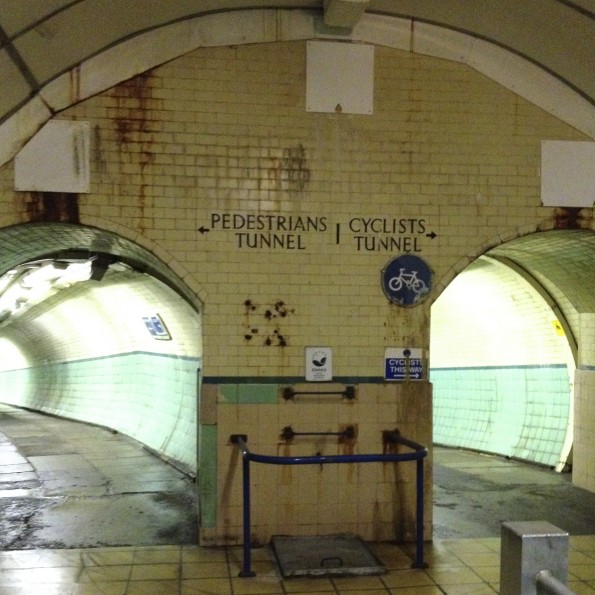
Today, these spaces are considerably cleaner, brighter and more welcoming, but still retain the essential character of the space. Today’s photo is of the ‘lobby’ at the opposite end of the tunnels: they haven’t switched positions!
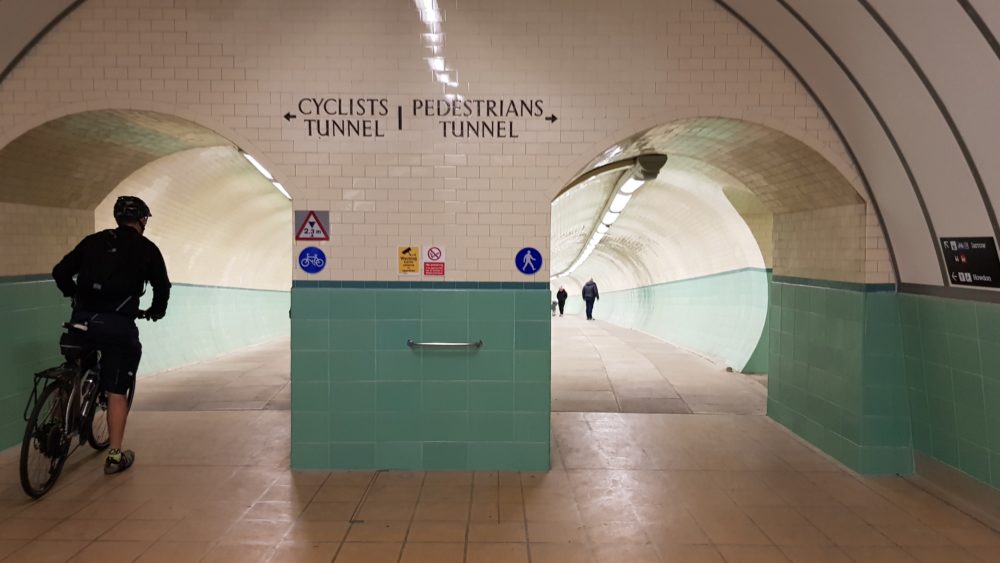
In 2012, the tunnels didn’t just smell damp: the ground was physically wet. The lighting was in a poor state of repair, too. The atmosphere was dingy and unwelcoming.
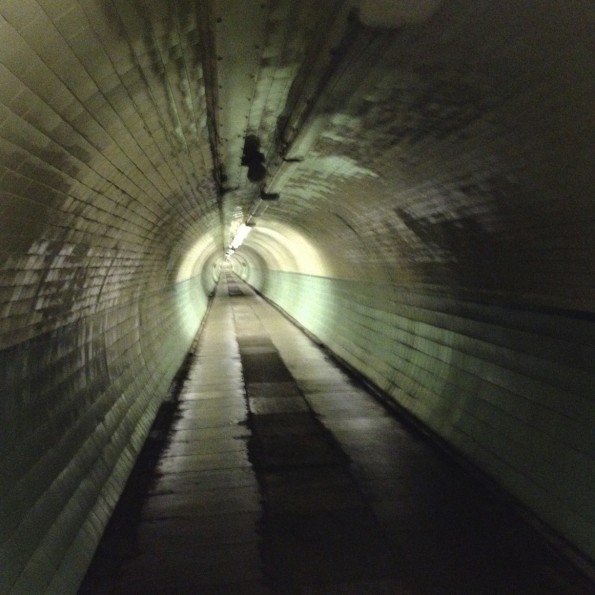
Today, the experience could not have been more different. The tunnels were clean, dry and well lit… and perhaps mildly ‘other worldly’.

In 2012, there were a number of upsetting and unnerving damaged bits of wall along the way, which felt to me as though they were raising uncomfortable questions about the structural integrity of the passage.
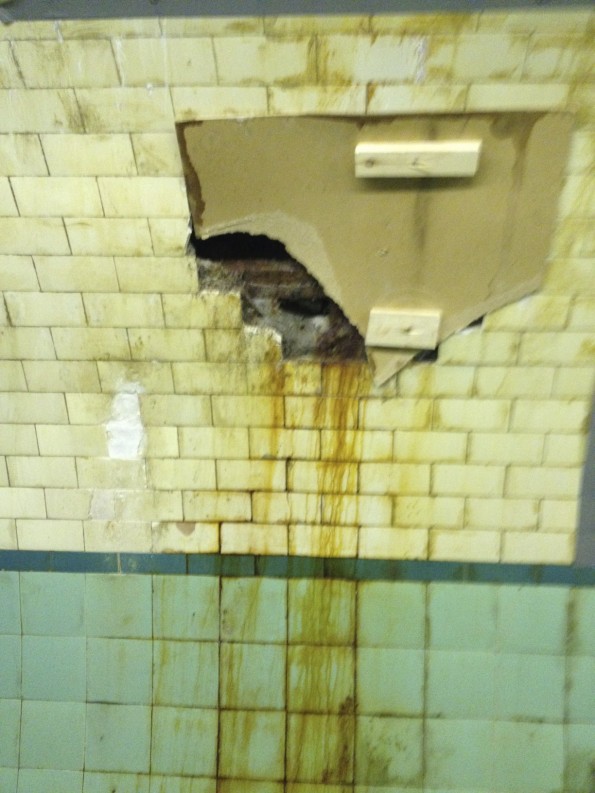
By contrast, today there are a number of new emergency help points with flip-down seating, sensitively designed to blend in with the curvature of the tunnel wall.
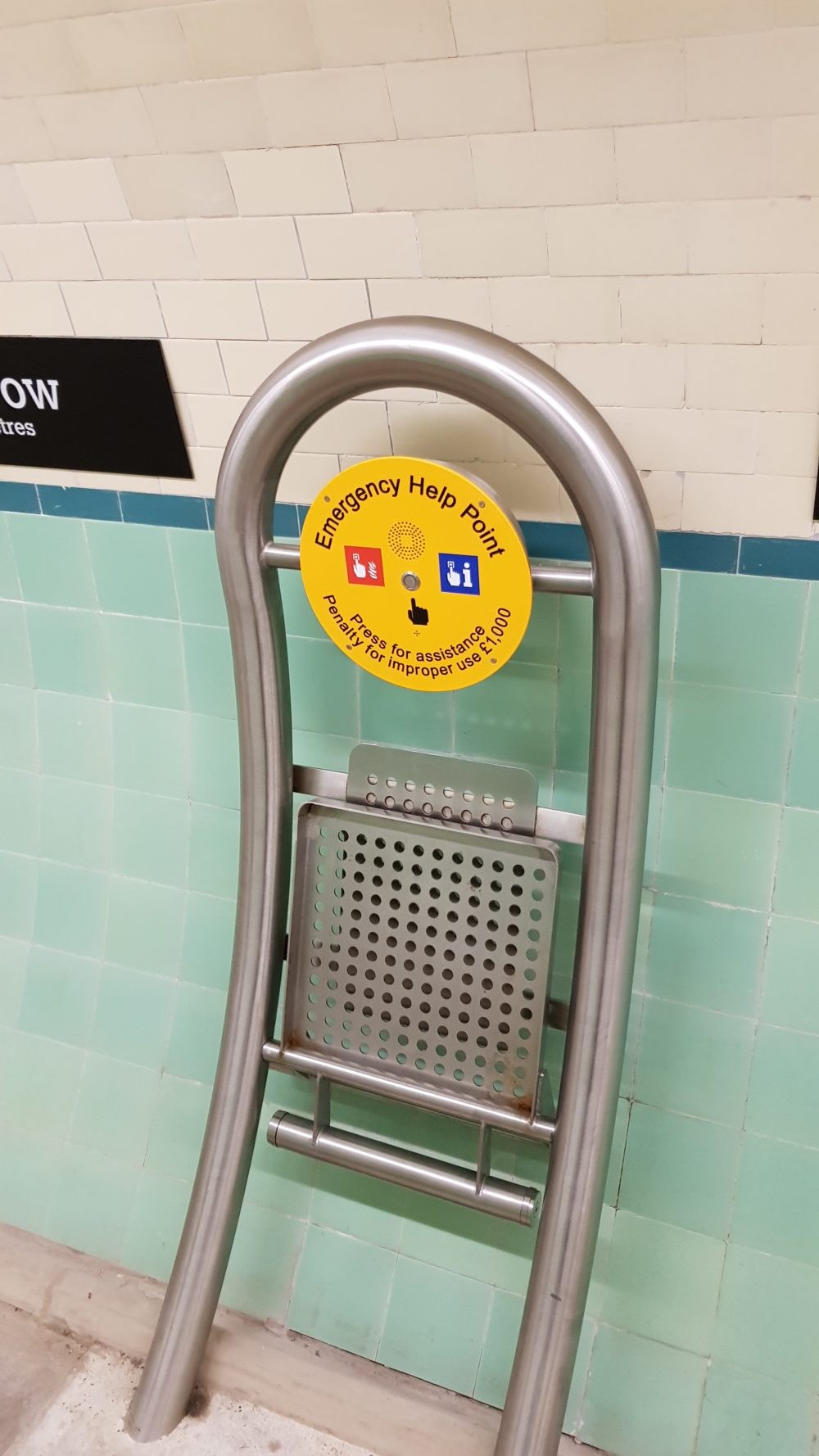
The midpoint of the tunnel is clearly marked, as one passes from the historic County of Durham to the County of Northumberland. In 2012, this was marked by some weird rusty metal plates.
Today, what I assume may always have been ventilation shafts are capped with a more aesthetically pleasing metal grid.
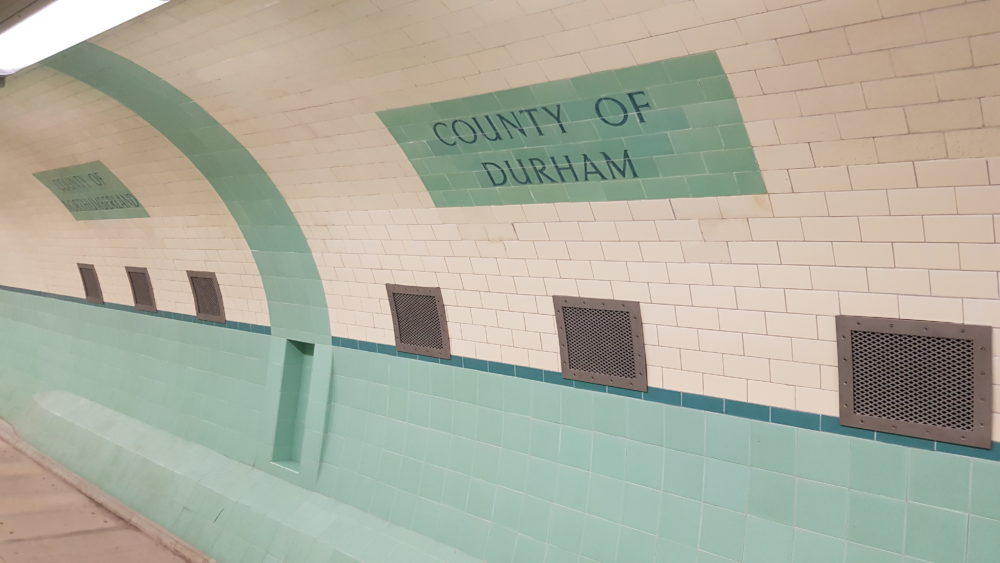
In 2012, for those with bikes (or those who couldn’t face the hike up the broken escalators) a vertical lift was provided on a branch off the main tunnels at each end.
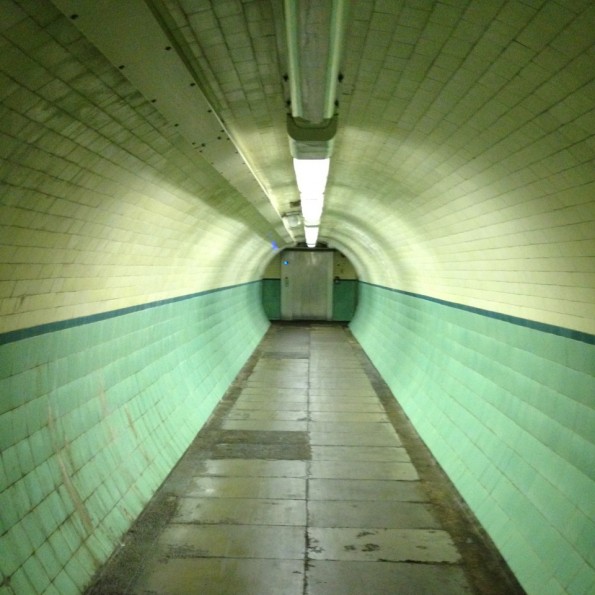
These remain in situ, though I think they may have been replaced with newer models.
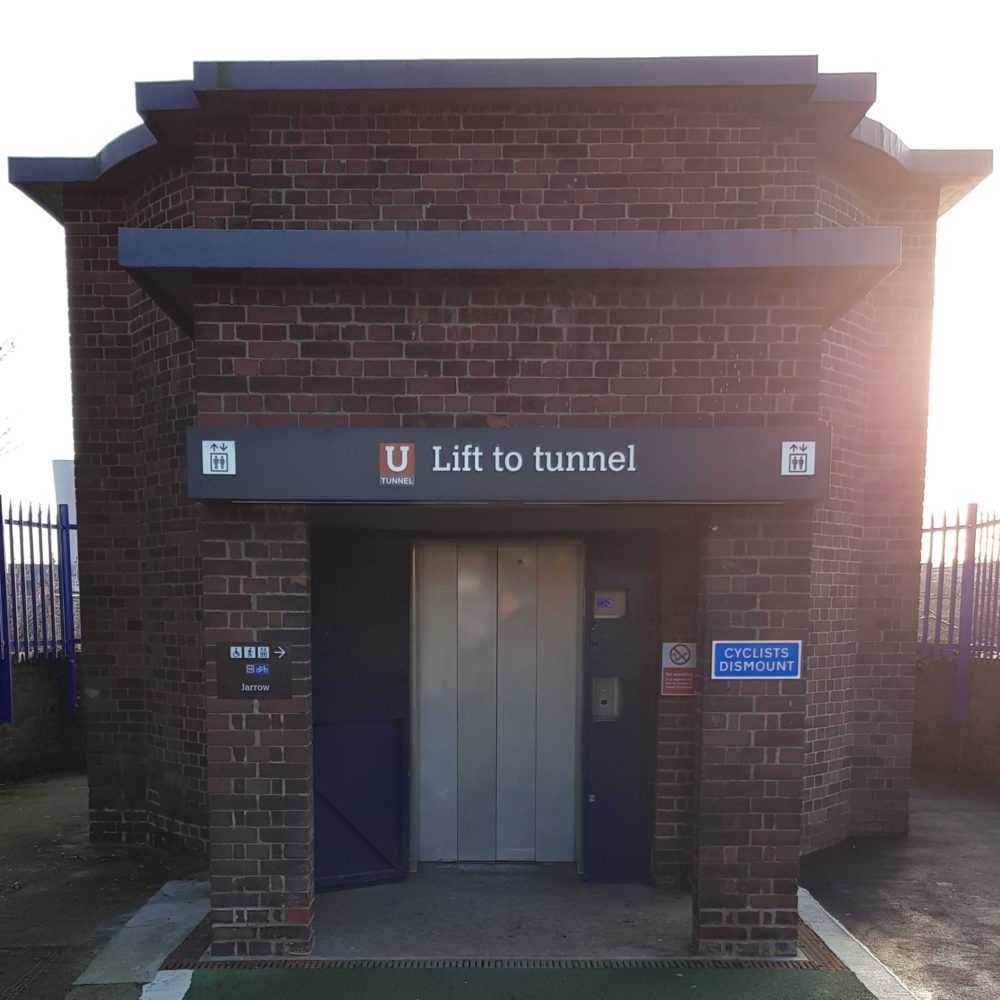
The works have also retained the ugly, but probably historically relevant, fish sculpture outside the northern rotunda.
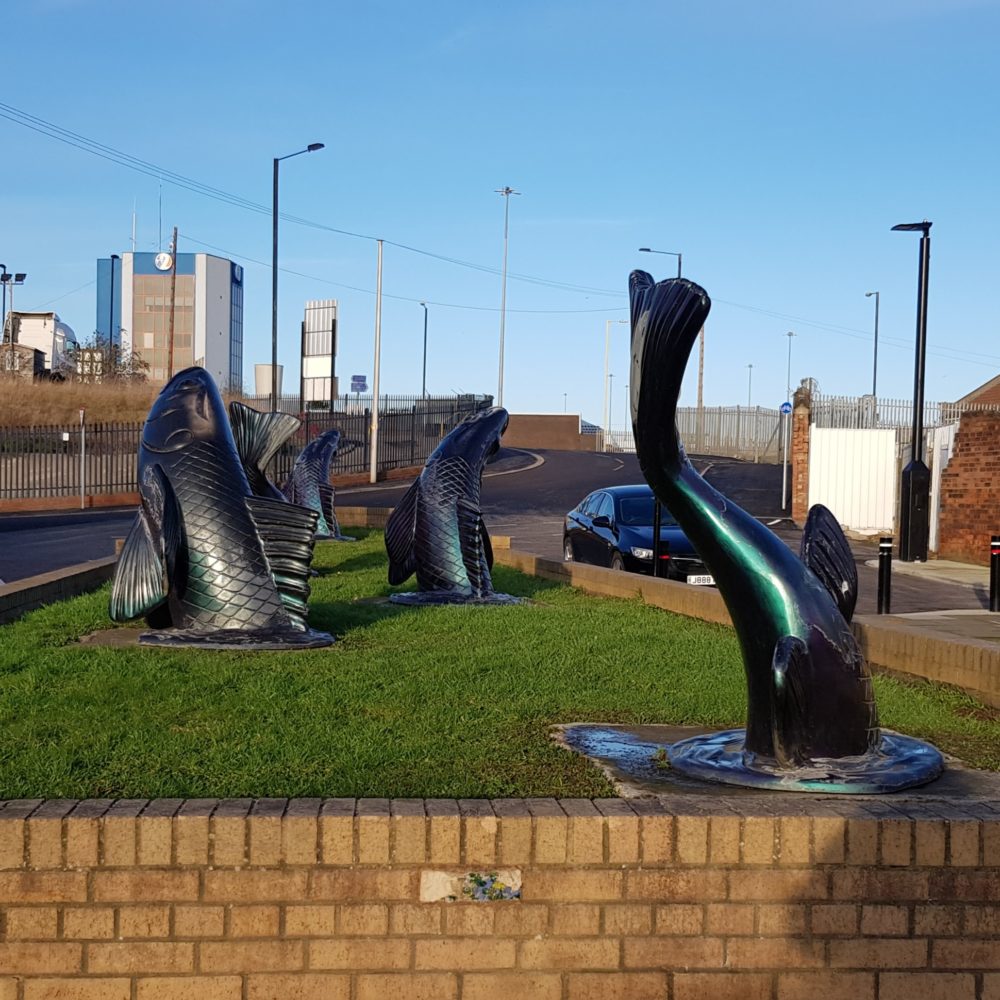
All things considered, I think this is a good job. It’s disappointing that two historic escalators have been ripped out and two turned into staircases, but it is probably unreasonable to expect 70-year-old machinery of this type to keep on working forever.
The difference in the feeling of the tunnels is night and day. They now feel bright and welcoming, and the modernisation hasn’t sacrificed the essence of the tunnels. From the care taken over the retention and repair of the tilework to the way that the historic painted signage has been kept and restored, this has clearly been a project on which respect and love for the craftsmanship of the original workers has not been in short supply.
Of course, it’s a shame that circumstances dictated that the restoration took so much longer than planned at such an increased cost. I hope that they get back to being continuously open soon enough, and that the restricted hours “until further notice” doesn’t turn into permanently restricted hours. I hope, too, that the inclined lifts enter service in the not too distant future.
But, overall, I’m left with the impression that this was an elegant and sensitive restoration of a mighty piece of civil engineering beneath a historic and beautiful river.
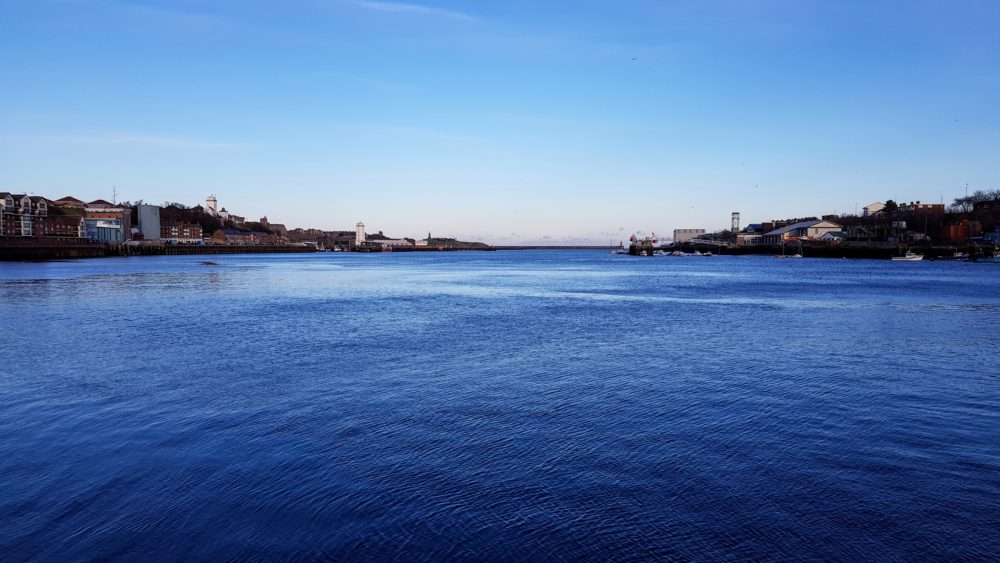
This post was filed under: Miscellaneous, Travel, Howden, Jarrow, Tyne Tunnels.

